(Reprinted by courtesy of Sydney City Bonsai Club)
At the May meeting Lee Wright gave a great talk about bonsai pots. Here are some notes from her talk.
“You change your clothes to suit the occasion and so you should choose your bonsai pot to suit your tree. It is the whole unit- tree and pot.”
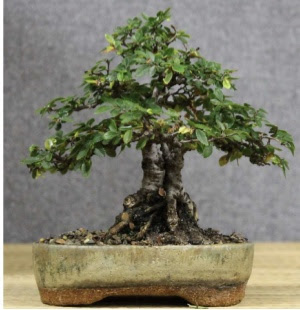
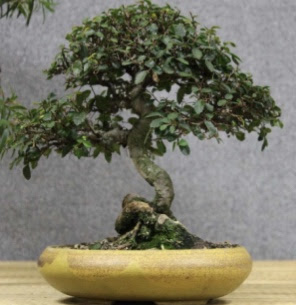
A tree has to tell a story and the pot should complement this story. The twin trunked elm (above left) is complemented by the handmade made two colour rectangular pot. This pot is rectangular but without sharp lines. The chunkiness of the pot reflects the fat, strong twin trunk. Contrast this with the elegant curved elm in the yellow pot on the right. Both the curves and the lightness of this pot reflect the curves and feminine nature of this tree.
The general rule for selecting pot depth is the width of the trunk above the nebari; the pot should be about the same height. However you should not sacrifice the health of a tree to meet this general rule.
 While the exaggerated bends in ‘Knock Knee’ are emphasised by the straight lines of the Japanese made pot, the handmade, free-form pot on the right may work better.
While the exaggerated bends in ‘Knock Knee’ are emphasised by the straight lines of the Japanese made pot, the handmade, free-form pot on the right may work better.
With the olive (below) the pot colour has been chosen to complement the colour of the trunk. Its texture is smooth and dull in order to make your eye see the tree rather than the pot.
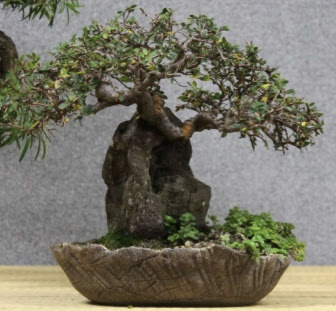
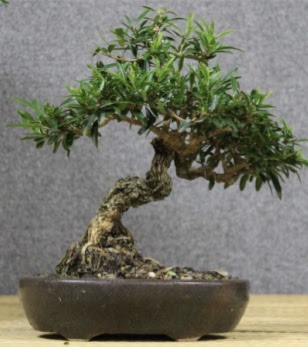
Plant species also lead you to choose certain pots. For example, figs should never go into rectangular pots. Everything about a fig is rounded; its leaves, its trunk. Make sure you choose a subtle colour to go with the tree- not a high glazed stark blue or very busy decorated one as your eye will be drawn to the pot and not the tree. Maples tell a soft story, so choose a pot with soft lines and colour. Azaleas should be put in a pot with a dull glaze so their beautiful flowers don’t compete with the pot.
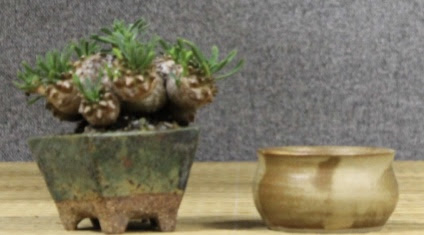 Accent plants need to complement both the tree which is being displayed and its pot so this may mean an accent plants pot may need to be changed to suit the display.
Accent plants need to complement both the tree which is being displayed and its pot so this may mean an accent plants pot may need to be changed to suit the display.
You don’t have to spend a fortune on bonsai pots. If you are astute and go to bonsai events where potters have sales tables you can pick up very good pots for very reasonable prices. Get there early and you can often find excellent handmade pots. Sometimes you can get great bargains where the potter sees a ‘flaw’ in the pot, e.g. a small crack or badly glazed area but the ‘front’ of the pot has that beautiful glaze that will exactly match your particular tree. Just go for it!
Often bonsai clubs (sales nights or at annual shows, such as the recent Illawarra Bonsai Club Show) have sales tables with second hand pots. You can often pick up fabulous Japanese Tokonama pots or quite rare handmade pots for a fraction of their normal price.
